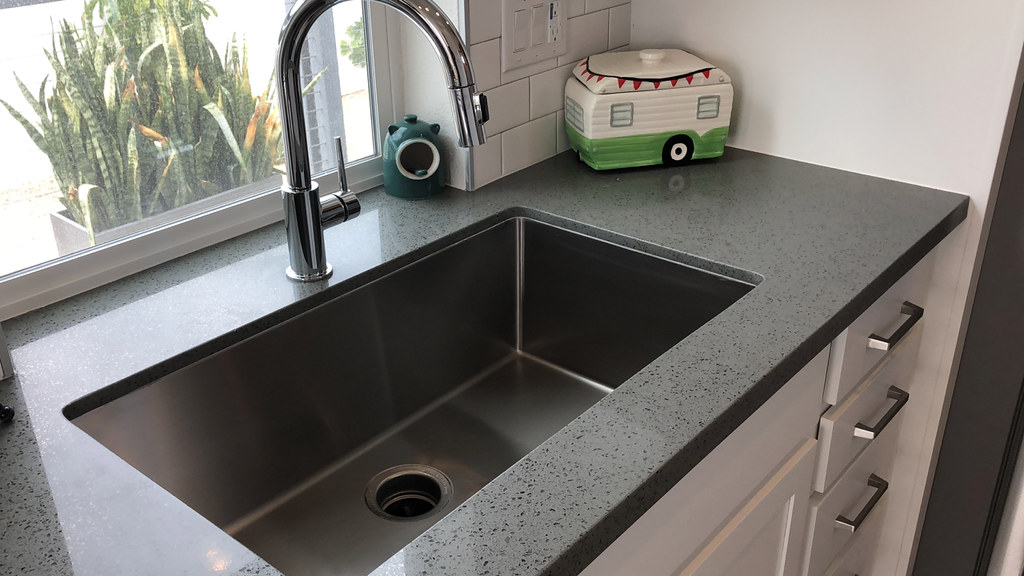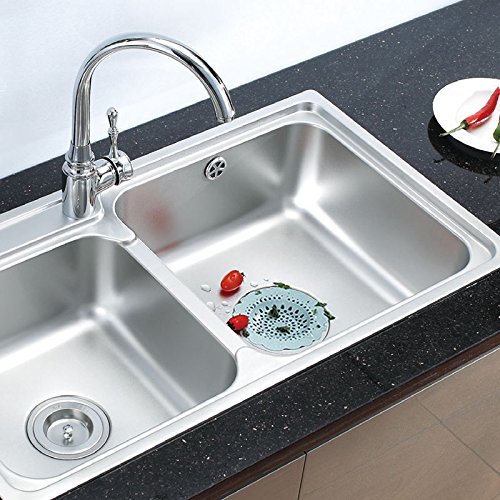
Summary
– Drill a stainless steel sink
– Drill a stoneware or ceramic sink
– Drill a sink made of synthetic material
– Drill a granite sink
You can drill a sink yourself with a few precautions.
There are many models of sinks, in various materials such as enameled or stainless steel, stoneware, and synthetic materials.
It is important to identify the material of your sink before drilling it, as the drilling method depends on the material you are working with.
Materials for drilling a sink
| Wrench | From $2 |
| Punch tool | From $5 |
| File | From $5 |
| Hammer | From $4 |
| Drilling machine | From $30 |
| Wood grater | $9 |
| Hole saw | From 30 € (without the drill) |
Drill a stainless steel sink

Drilling a stainless steel sink is a delicate operation because this material is not very thick.
To drill a stainless steel sink, proceed as follows:
– Stick a strip of tape where you want to drill the sink. It will prevent you from slipping with the drill bit.
– Equip the drill with a metal drill bit with the diameter of the punch shaft and drill the sink.
– Attach the two parts of the punch to each side of the sink, with the cutting part on the underside.
– Reassemble the pin through the hole.
– Gradually tighten the punch nut with a wrench until the hole is completely drilled.
– Remove the punch from the top, then disassemble the punch to remove the part you have cut out.
Tip: this type of sink is not very thick. Choose a faucet equipped with a reinforcement plate to be fixed under the hole, the fixing will be much more stable.
Drill a stoneware or ceramic sink
On a stoneware or ceramic sink, the holes intended to become the location of the faucets are provided in the casting.
You can locate these holes by placing the sink upside down. The holes are drilled from the top of the sink (enamel side).
– Start by marking the axis of the hole.
– With a hammer and a needle, strike the hole you have previously located.
– The cover is now uncoupled from the sink.
– Using the tip of the hammer, gently tap the ceramic remnants from the center to the edges.
– Proceed even more gently as you reach the edges of the hole.
– If desired, you can soften the edges of the hole by using a soft file.
Drilling a synthetic sink
Generally, sinks made of synthetic materials are composed of a mixture of acrylic resins and powder of mineral origin (quartz, granite…). These fine materials allow easy and precise drilling.
– Turn the sink over, you will start by drilling it on the underside.
– Using the drill bit of the hole saw, drill a hole at the level of the conical primer on the underside of the sink. The conical starter is the small crater that you will use as a guide for drilling.
– Turn the sink upside down.
– Position the hole saw a bit in the previous hole.
– Use the hole saw to drill the hole for the faucet.
Drill a granite sink
Granite is a natural and solid material. Most of the time, granite sinks are equipped with a pellet that locates the location of the future hole that will accommodate the faucet.
– Insert the sink into its location on the countertop.
– With the needle and a hammer, strike the location mark on your sink with a sharp blow.
– Tap the granite scraps with a small hammer.
– Use a rasp to clear the hole previously drilled.
You are done! Hope this post helps you out. Remember to leave your comments below.











